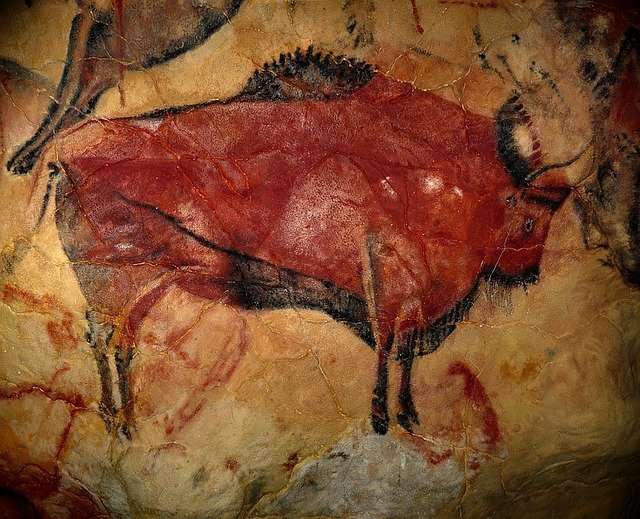I have been working in the world of art for a long time. I have been an artist, a dealer, and an auctioneer, but these days I am very happy just to be an art fan.
I am writing this blog because I want to share my experiences with you. I want to give you tips on how to get started in the world of art as a collector, seller, or connoisseur.
TIP 1 – Go to gallery openings and meet artists and dealers. Making friends with artists is a great way to learn about art. Dealers will also keep you appraised of what kind of art is selling and what prices you should expect to pay for it.
The next time you go to an art opening notice who hangs out together. The people talking in the corner are the dealers, they are there not only to sell art but also to network so don’t be shy about asking them questions about art. People standing around one particular painting or sculpture are probably collectors talking about that work and how much they love it. Try introducing yourself; they may even let you know how much they paid for it and why they love it so much.
There are a lot of places you can go to find out how to get started in the art world. From blogs to books to college courses, there is no shortage of sources covering various aspects of the subject. But they are often aimed at specific niche markets or specific types of artists.
I would like to create a single comprehensive resource that covers everything from the basics to getting your work out into the real world and selling it. I have been doing this for a while now, so I know where people have questions and where they get confused. This is going to be a blog with regular updates that gets more and more in depth as it goes on. There will be comments enabled where readers can interact with me and each other, as well as links posted regularly to other useful resources.
One thing I am very aware of is that there are many artists who want to make money from their work but do not want to sell their work or become professional artists in the traditional sense. They want to make money from art, but they also want control over their lives and don’t want to be locked into one career path. Many people just want to make a little money on the side doing something they enjoy. This is absolutely a viable option, and it’s not what most popular resources
Art websites are a great way to get started in the art world. They allow you to break into the art world without having to be a professional artist or gallery owner.
Art websites can be a great source of income, and it is easy to start your own art website. With minimal up front costs, anyone can start their very own art website and begin getting traffic within a week or less.
Trying to get started in the art world with no experience and no contacts can be extremely difficult. One of the best ways to get around this would be to start your own art website and begin writing about the art world. This will allow you to learn while also making connections that will ultimately lead you into the art world.
If you are an artist and want to sell your work online, you should definitely check out some of these sites and see if they are right for you. They are several different models for success, but they all have one thing in common: they provide an excellent opportunity for artists looking to make money online
http://www.bloggerartistsguidebook.com/
http://www.theartbizmadeeasyblog.com/
http://www.anatomyofamovieblog.com/
http://www.art
There are actually many different kinds of artists. They are all united by the act of creating art, but their jobs vary greatly as do their fields of interest. Some specialize in just one medium or style while others work in a wider range of media. An artist’s job is to create and express ideas through a specific medium.
The world of art is a little complicated and can be intimidating to the novice, but it’s actually quite accessible and fun once you get in. This site helps remove some of the mystery and confusion by explaining some basic terms, giving advice on how to approach your local art scene and detailing some options for further study.
This blog was established with the hope that it will be useful to both novice artists and those who are interested in exploring the world of art as amateurs. I encourage anyone with questions or comments to contact me via email.*
I have had a number of people ask me about how to get started in the art world. While this might seem like a strange question, it is actually quite common in my experience.
I have been working in the art world for over 10 years now, and I still have people asking me about how to get started. It’s a little bit confusing at first, but what most people are looking for is advice on how to sell art.
The problem with selling art is that you need to know how to sell art before you can sell art. The same thing applies when you are trying to get your career as an artist off the ground.
In order to sell any product or service you need some basic skills. You need to be able to spot market opportunities, come up with ideas that appeal to clients, work out what makes an idea good and what makes an idea bad, and present those ideas in a compelling way.
To make matters worse, there is no shortcut for these skills. You don’t get them by going out and buying a self-help book or signing up for a course online (though there are plenty of those). You get them by doing the hard yards of actually doing stuff that involves creativity: making stuff and then seeing if it sells.
Art websites are displayed in many different ways. Some of them are designed to look like an art gallery or an artist’s studio, complete with pictures of art and artists. Some look like a business website for a gallery, an artist’s supplies company, or an art school. The basic layout is usually the same, though. There is a banner at the top with a graphic logo or piece of artwork and navigation at the top and bottom of the page.
The navigation bar at the top of the page is easy to spot because it has buttons you can click on to see other pages on the site. The navigation bar at the bottom looks more like content than navigation and may not be as obvious. You can find it by looking for links in text and by seeing what graphics there are in the margin that aren’t part of any post. Many sites have advertising, which may be displayed alongside content or as separate banners above and below every post.
“Art is big business,” says Don Thompson, director of the Arensberg Program in Art Administration at the University of Texas at Austin. “And art schools are becoming more and more important to universities.”
Thompson is one of the organizers of a panel called “Art Schools: An Introduction” that takes place on Thursday, October 24, at the annual meeting of the Association of University Arts Administrators in Austin. The panel features three administrators who will provide an overview of how art programs fit into the overall mission of their respective institutions.



